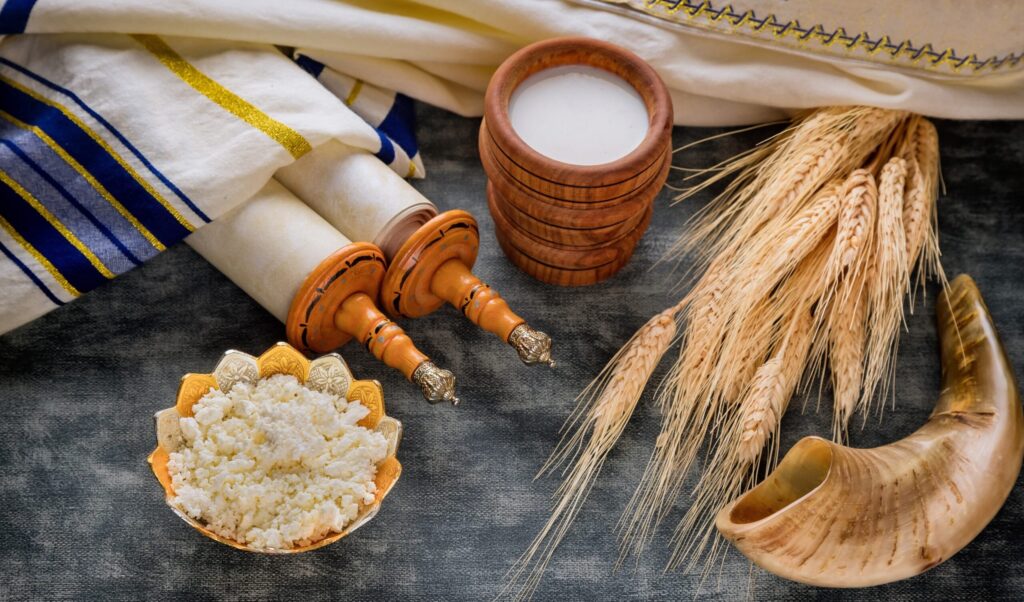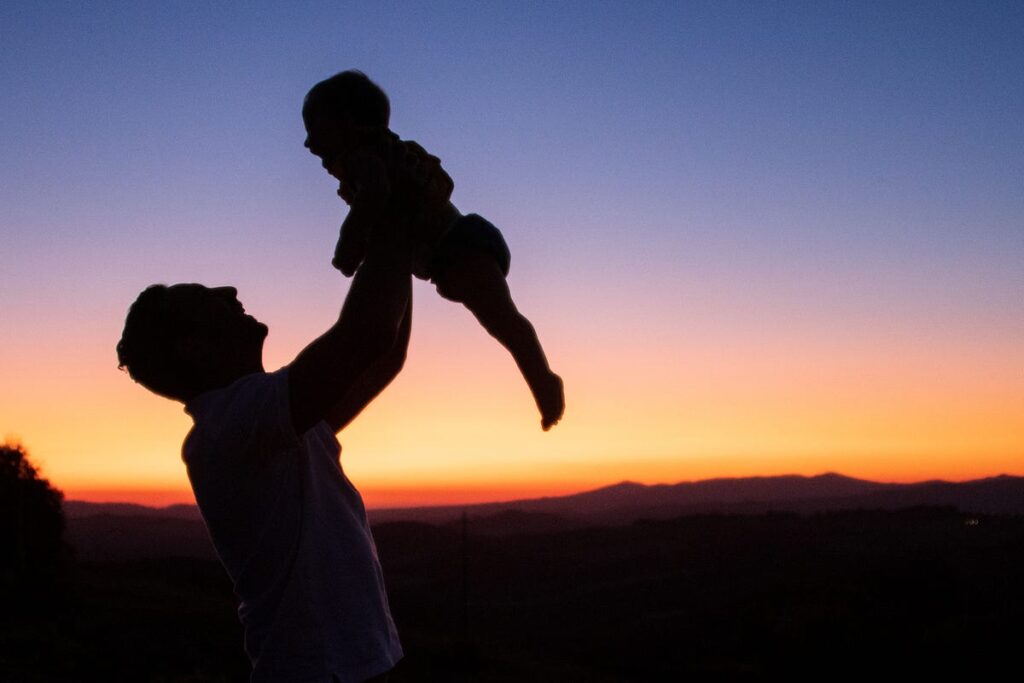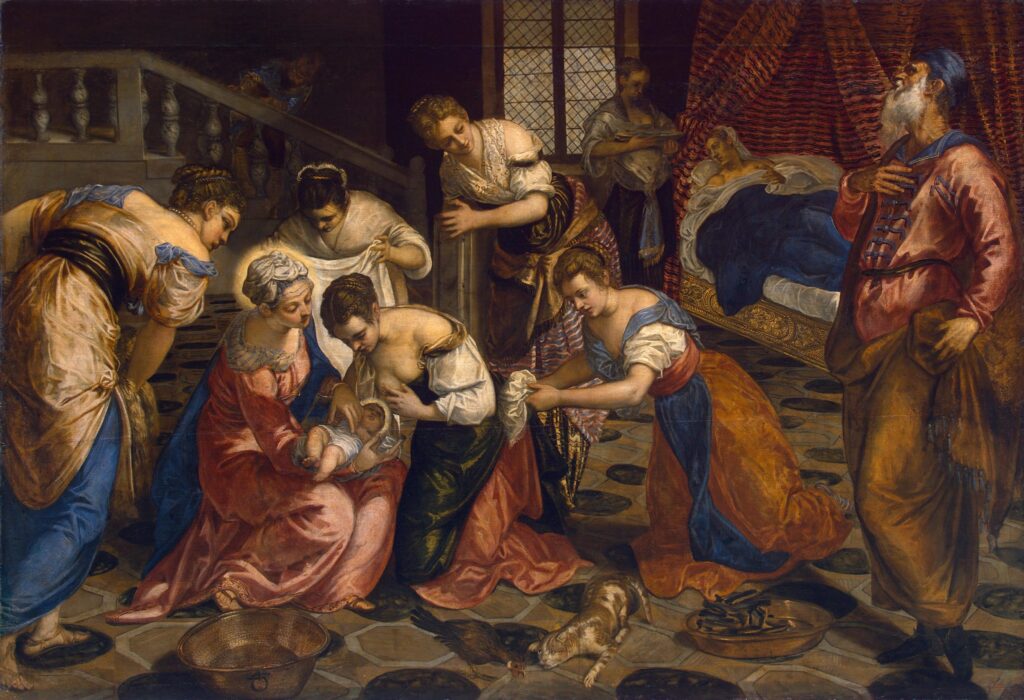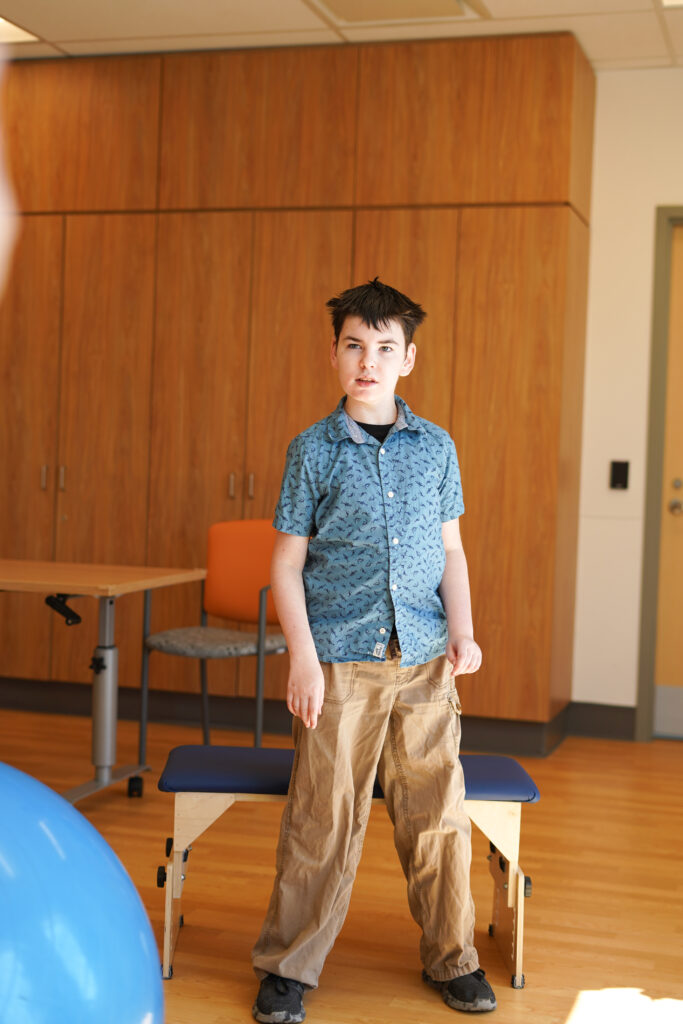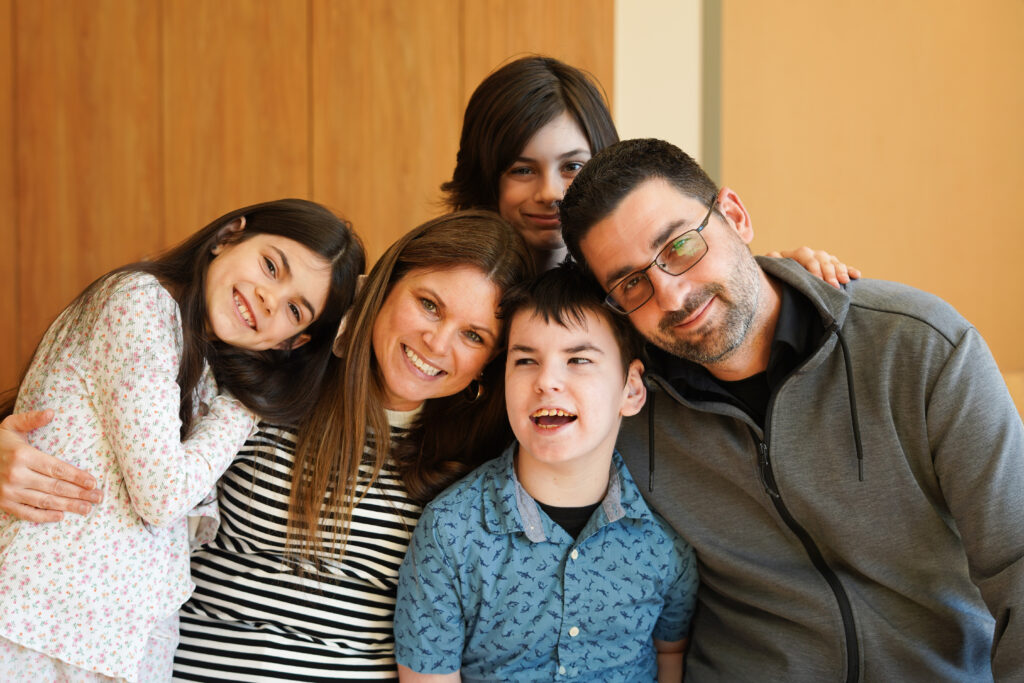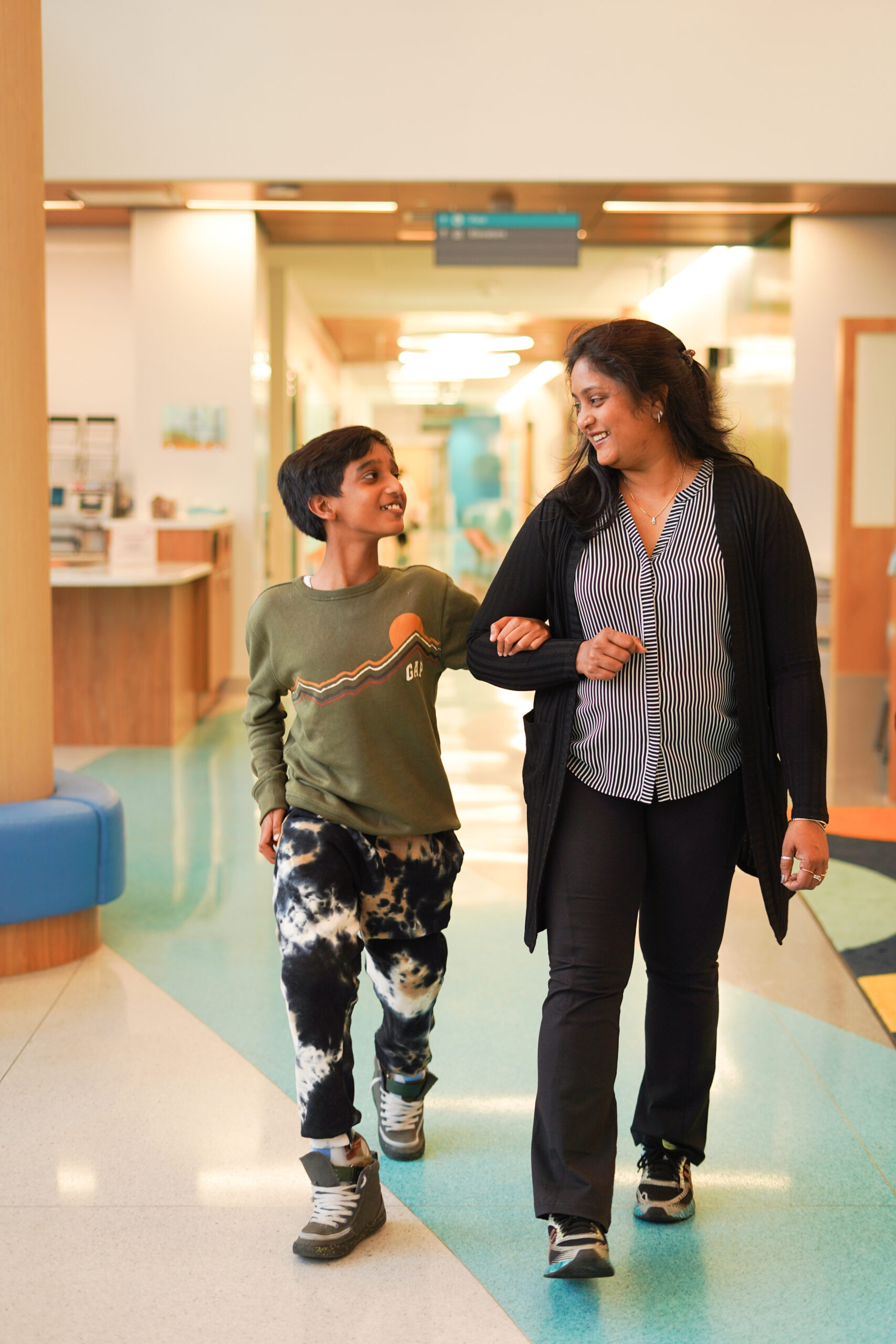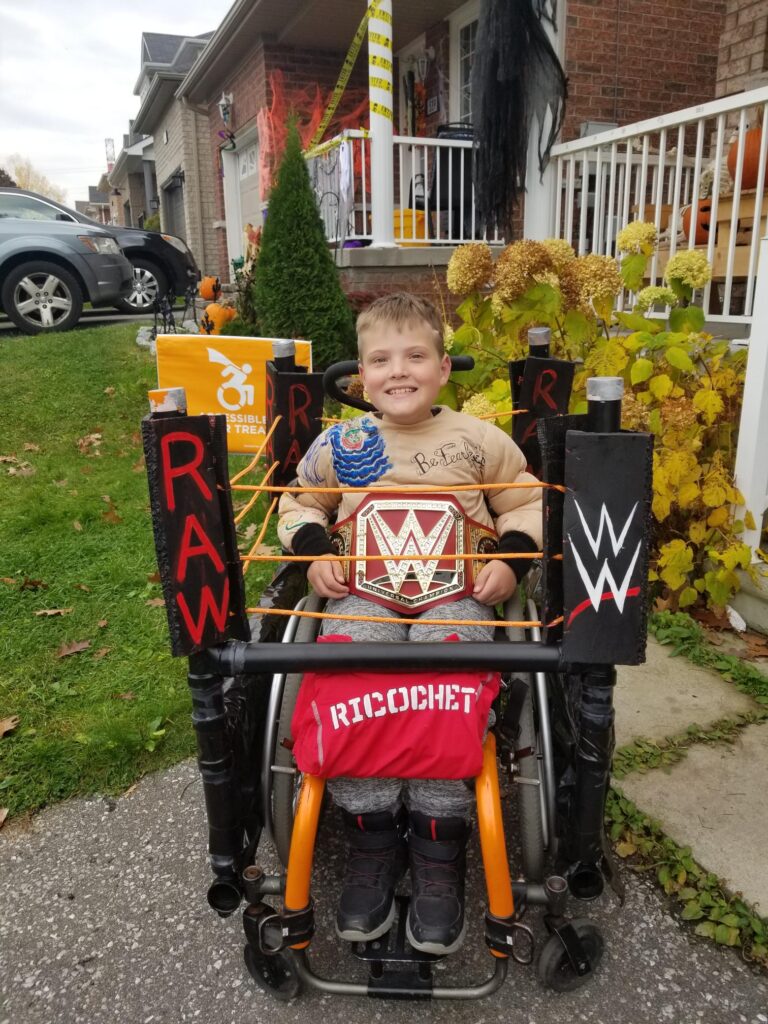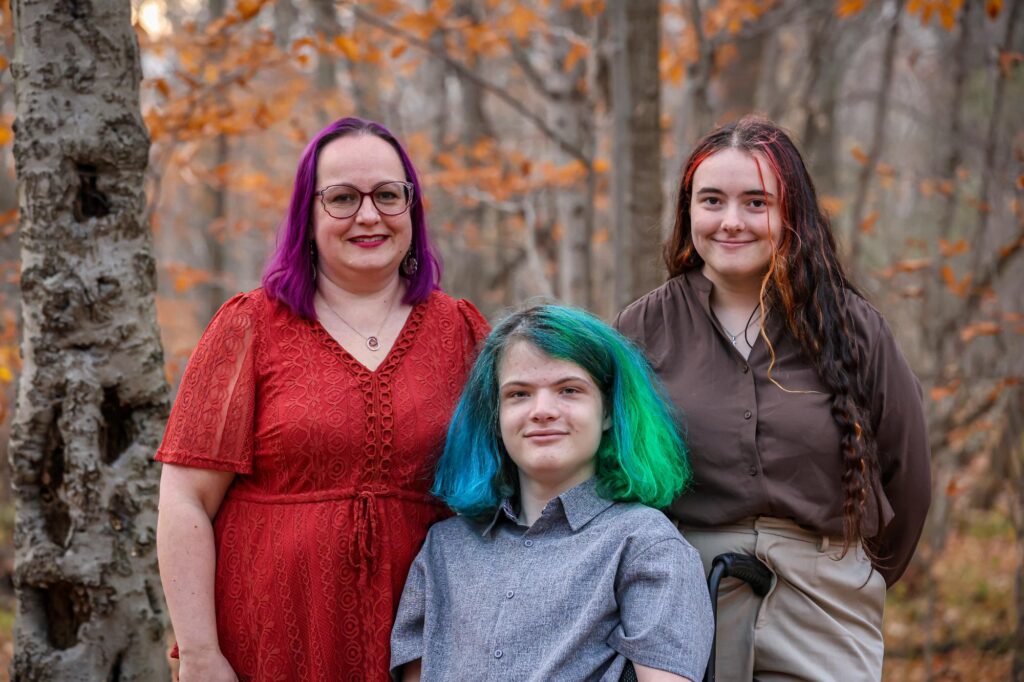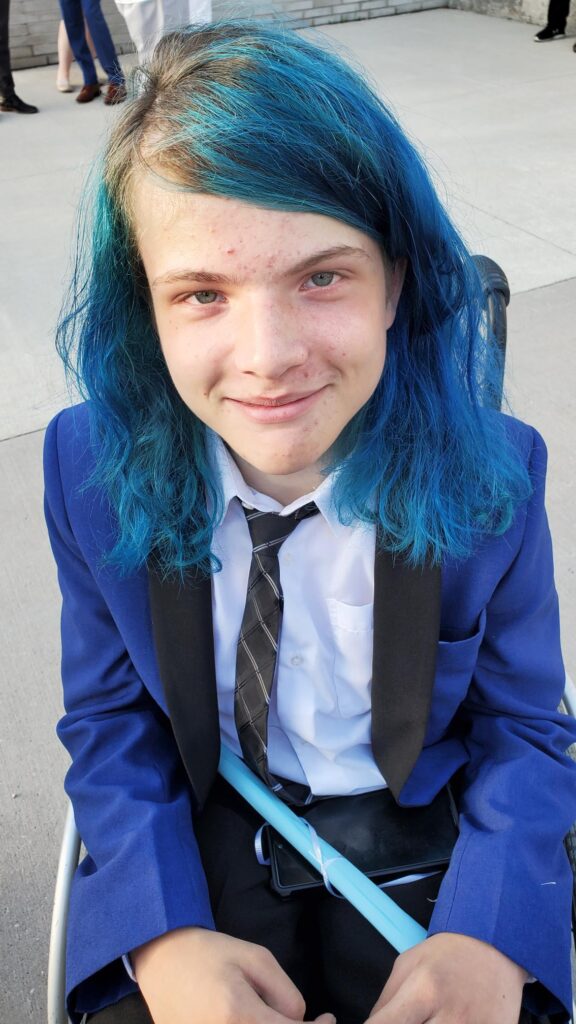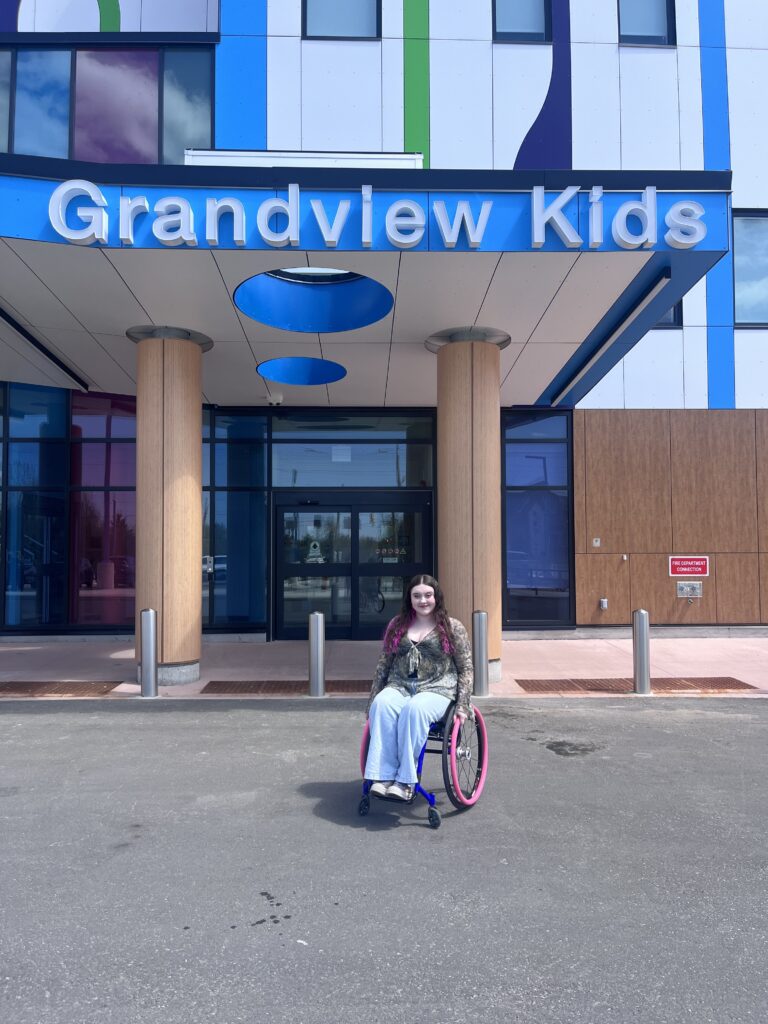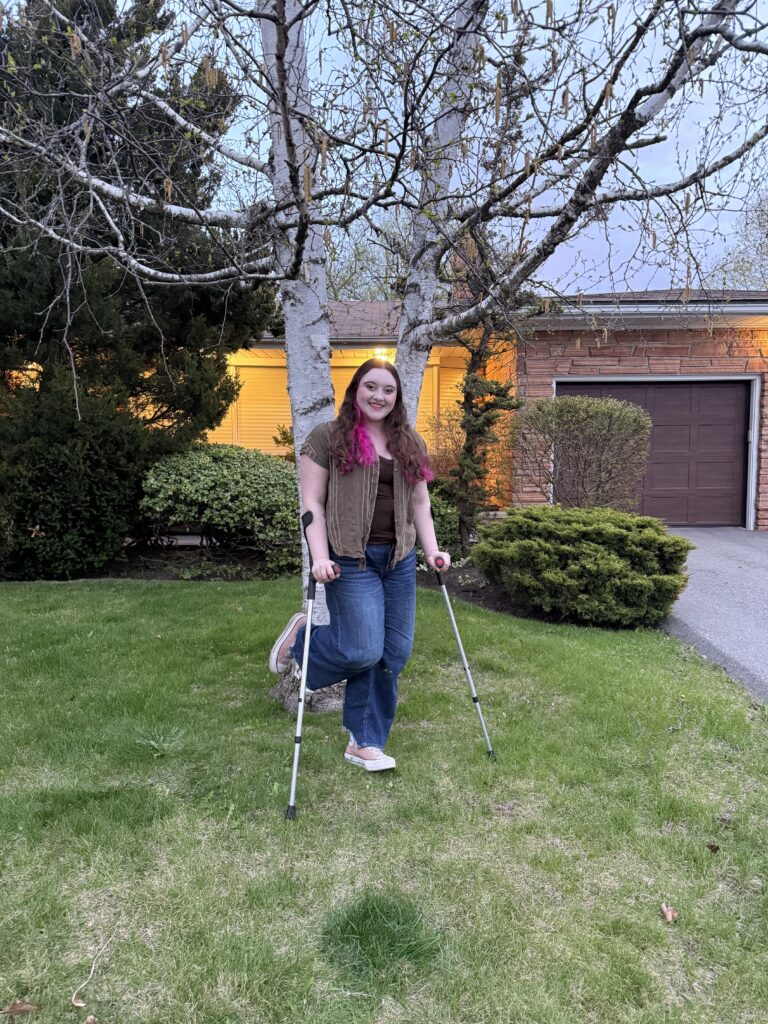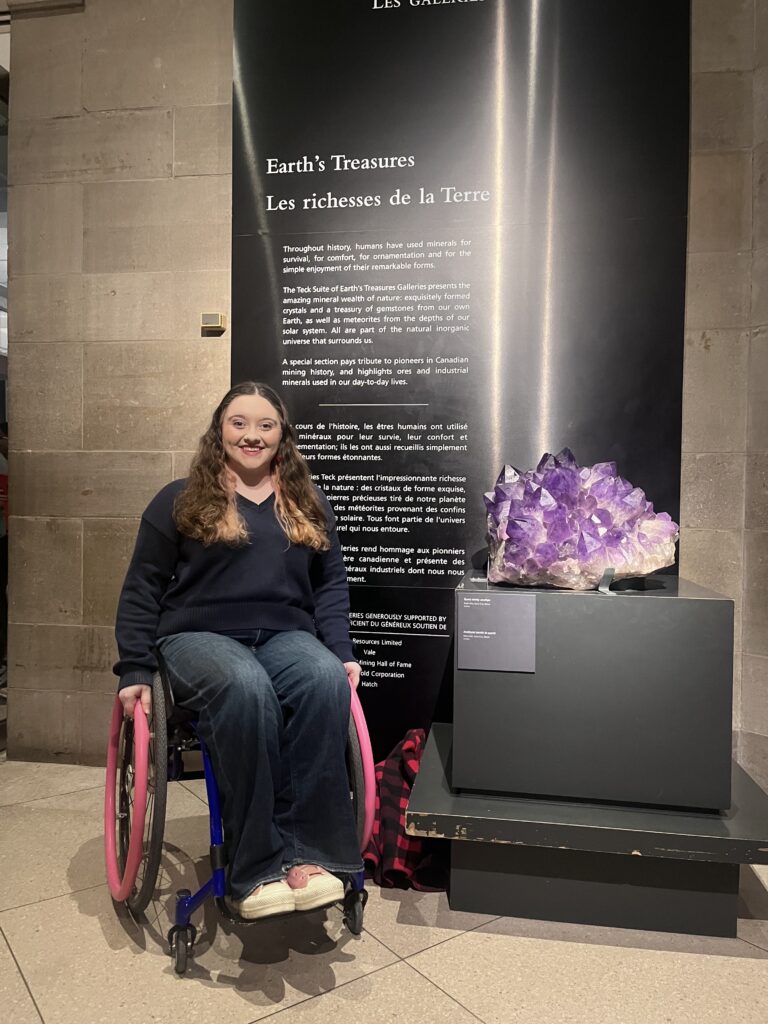In June, we acknowledge Pride Month, Brain Injury Awareness Month, Stroke Awareness Month, Scoliosis Awareness Month, National Indigenous History Month, National Cancer Survivors Day, World Brain Tumour Day, World Blood Donor Day, CDKL5 Awareness Day, Autistic Pride Day, World Refugee Day, National Indigenous Peoples Day, Dravet Syndrome Awareness Day, National Post-Traumatic Stress Disorder Awareness Day, Canadian Multiculturalism Day and International Pride Day. Read more about each date of significance below, written by members of Grandview Kids’ Inclusivity, Diversity, Equity and Accessibility (IDEA) Committee.
Pride Month
Although June is Pride Month in the United States, in Canada it marks the first month of Pride Season, a term that refers to the wide range of Pride events that take place over the summer (June to September). It’s the season when 2SLGBTQI+ communities and allies come together to spotlight the resilience, celebrate the talent and recognize the contributions of 2SLGBTQI+ communities.
Many Pride events in Canada occur in Pride Month (June) to honour the Stonewall riots in the United States. Toronto’s Pride weekend in June is now among the largest Pride events in North America. Several major cities in Atlantic Canada hold their Pride celebrations in July, and others hold their events in August to honour the “We Demand Rally,” the first large-scale gay rights demonstration in Canada in 1971.
Although special attention is placed on Pride events during the summer months, they happen throughout the year in many communities.
Click here to learn more about upcoming Pride events for youth in the Durham Region!

Brain Injury Awareness Month
Brain Injury Awareness Month, observed every June in Canada, aims to increase understanding of the effects of acquired brain injuries and reduce the stigma often associated with them. Each year, advocacy groups, survivors and health-care professionals come together to share stories, promote prevention strategies and highlight the need for accessible support services. Raising awareness helps ensure those living with brain injuries receive the recognition, resources and rehabilitation they need to lead meaningful lives.

Stroke Awareness Month
In Canada, Stroke Awareness Month is observed in June to highlight the importance of stroke prevention, early recognition and fast response. Stroke is a leading cause of death and disability in the country, affecting more than 62,000 Canadians each year. The campaign, led by organizations like the Heart and Stroke Foundation of Canada, aims to educate the public about risk factors, warning signs and the critical need for immediate medical help.
A central message is the use of the acronym FAST — face drooping, arms weakness, speech difficulty and time to call 9-1-1. Prompt action can save lives and significantly reduce long-term effects.
Throughout the month, educational events, webinars and social media campaigns help raise awareness. For example, a national webinar on vascular cognitive impairment is scheduled for June 17, 2025, offering insights into evidence-based stroke care. Canadians are encouraged to learn the signs of stroke, make healthy lifestyle changes and share this life-saving knowledge with others.
Stroke Awareness Month is not only a time to promote prevention but also an opportunity to support those recovering from stroke and recognize the ongoing efforts of health-care providers in improving stroke outcomes nationwide.

Scoliosis Awareness Month
Scoliosis Awareness Month, recognized each June, focuses on educating the public about the signs, symptoms and treatment options for scoliosis, a condition characterized by an abnormal curvature of the spine. Early detection, especially in children and adolescents, is critical to managing the condition effectively. Through community events, social media campaigns and support networks, the month empowers individuals affected by scoliosis and encourages ongoing research and advocacy.
National Indigenous History Month
June is National Indigenous History Month, when all Canadians — Indigenous, non-Indigenous and newcomers — celebrate the distinct cultures and contributions of First Nations, Inuit and Métis peoples to the fabric of Canada. Celebrating helps preserve the rich cultures, traditions, languages and spirituality of Indigenous peoples, along with their resilience in the face of historical injustices.
It is also a time for non-Indigenous Canadians to reflect on the historical and ongoing impacts of the residential school system, which began in the late 1800s and lasted until 1997, when the last residential school closed. An estimated 150,000 Indigenous children were taken from their families, forced to abandon their identities and taught that they were inferior to European culture.
Historical segregation and assimilation policies, such as the Indian Act, removed Indigenous peoples from their lands, forced them onto reserves or settlements and outlawed distinct cultural practices, including languages and spirituality.
During National Indigenous History Month, all Canadians are encouraged to learn, reflect and celebrate the unique cultures of Indigenous peoples.
Opportunities to celebrate Indigenous people and culture:
- The Summer Solstice Indigenous Festival June 1 to 21 (live streaming)
- Attend a PowWow celebration where Indigenous people lift their spirits after winter through cultural expressions such as drums and dancing
- Watch one of the numerous films or documentaries available online
- Listen to a Podcast such as This Land or Native Currents
- Make and post a personal pledge of Reconciliation

National Cancer Survivors Day: June 1
National Cancer Survivors Day, observed on June 1, is a meaningful occasion that celebrates those who have triumphed over cancer, honouring their strength and resilience. It offers inspiration to those recently diagnosed by sharing the stories and presence of survivors. The day also provides important support for families, caregivers and loved ones, recognising their vital role in the cancer journey and helping them connect with others who understand. Beyond the personal, it serves as outreach to the broader community by raising awareness about the challenges of survivorship and highlighting the need for continued research, compassion and care.

World Brain Tumour Day: June 8
World Brain Tumour Day is observed each year on June 8 to raise awareness and educate the public about brain tumours, their causes, symptoms and the importance of early detection. The observance was first established in 2000 by the German Brain Tumour Association, a non-profit group based in Leipzig. A brain tumour develops when cells in the brain grow uncontrollably, forming a mass of abnormal tissue. Because the skull is a confined space, these abnormal cells can increase pressure within the brain, leading to symptoms as the tumour interferes with normal brain function.
World Blood Donor Day: June 14
World Blood Donor Day is observed each year on June 14 to thank celebrate blood donors and raise awareness about the importance of safe blood and blood products. The day highlights the critical role blood donors play in saving lives and improving health around the world. It also encourages more people to donate regularly, helping to ensure a reliable and sufficient blood supply for hospitals and patients in need. Events and campaigns held globally promote donor recruitment and retention, while recognising the generosity and commitment of those who give blood.

CDKL5 Awareness Day: June 17
CDKL5 Awareness Day is observed each year on June 17 to raise awareness about CDKL5 deficiency disorder, a genetic condition that affects brain development and function. June is also recognized as CDKL5 Awareness Month.
CDKL5 deficiency disorder is a rare X-linked genetic condition that typically appears in the first few weeks or months of life through early-onset seizures. CDKL5 stands for cyclin-dependent kinase-like 5. The CDKL5 gene is located on the short arm of the X chromosome (Xp22.13) and is responsible for producing the CDKL5 protein, which is essential for normal brain development and function.
The day honours Glyn Boltwood, whose life and legacy contributed to the discovery of CDKL5 deficiency disorder in 2004. Lime green is the official ribbon colour for CDKL5 awareness.
Autistic Pride Day: June 18
Autistic Pride Day is celebrated each year on June 18. It is an opportunity for autistic people to focus on their unique experiences as neurodivergent individuals. The day began in the early 2000s and has grown every year. Its goal is to promote acceptance and understanding of the autistic experience, emphasizing that autism is not an illness that needs to be cured.
Coming together as a community and sharing experiences through art, workshops, marches and common interests is important for any group. The infinity rainbow is a symbol often used by the autistic community to express a shift away from focusing on deficits and challenges toward a more positive understanding of acceptance and inclusion.

The story of the symbol includes several key elements. Its symmetry is a reimagining of the infinity sign, representing the infinite potential of people on the autism spectrum. The symmetrical lines reflect the harmony and balance that concrete thinkers often find easier to interpret. The colours are inspired by the 2SLGBTQIA+ flag. The red gradient protests the use of blue by Autism Speaks in their puzzle piece logo, while the gold references ‘Au’ (gold) on the periodic table, a symbol often used in the autism community to reflect the worth and value of autistic people. The symbol serves as a beacon of hope against stigma and harm while representing the pride and strength of the community.
World Refugee Day: June 20
World Refugee Day is observed each year on June 20 to honour the strength and courage of refugees around the world. The day raises awareness about the challenges faced by millions forced to flee their homes due to conflict, persecution and violence. It also recognises the contributions refugees make to their new communities and encourages support for their protection and resettlement. Events and campaigns held globally promote solidarity and call for solutions that uphold the rights and dignity of refugees everywhere.
National Indigenous Peoples Day: June 21
National Indigenous Peoples Day is June 21 and coincides with the summer solstice and the beginning of a season of berry picking, fishing, powwows and gatherings for the diverse Indigenous peoples of Canada.
National Aboriginal Day, now National Indigenous Peoples Day, was announced in 1996 by then Governor General Roméo LeBlanc. The day was created following consultations and support from various Indigenous groups. On June 21, 2017, the prime minister issued a statement announcing the intention to rename the day National Indigenous Peoples Day.
The day recognizes and celebrates the history, heritage, resilience and diversity of First Nations, Inuit and Métis across Canada.
The visual for National Indigenous Peoples Day includes many elements. The sun, represented by the date “June 21,” remains at the centre to show its importance in the festivities. First Nations, Inuit and Métis, as well as the four elements of nature — earth, water, fire and air — are represented by different symbols and colours. The visual is supported by multicoloured smoke, which reminds us of Indigenous spirituality as well as the colours of the rainbow, a symbol of inclusion and diversity among all First Nations, Inuit and Métis communities and their members.
Smoke is used in different ways by all three Indigenous groups in Canada. Whether it is to smoke fish and meat, to burn sage and tobacco, or in sacred ceremonies and celebrations, it is a significant symbol in Indigenous culture.
The three icons in the visual represent:
- The eagle, symbolizing First Nations
- The narwhal, symbolizing Inuit
- The violin, symbolizing Métis

Dravet Syndrome Awareness Day: June 23
Dravet syndrome is a rare genetic disorder of chromosome 2 (SCN1A) that causes epilepsy, neurological conditions and behaviour disorders. It was first identified by Dr. Charlotte Dravet in 1978. One in 30,000 people of all races, nationalities and ethnicities are born with Dravet syndrome. Only five per cent of cases are genetically inherited, while 95 per cent occur randomly.
Seizures begin during infancy and patients experience multiple seizure types, developmental delays in early childhood and motor and behaviour disorders that often worsen with age. Other health issues include autonomic dysfunction, autistic traits, attention deficit and hyperactivity, ataxia or unsteadiness, orthopedic conditions and sleep disturbances.
Patients require constant care, which can affect both their quality of life and that of their caregivers. Treatment options are limited and include anti-epilepsy medications, special diets and interventions such as speech and occupational therapy. Early diagnosis and research into disease-modifying treatments offer hope to patients and their families.
National Post-Traumatic Stress Disorder Awareness Day: June 27
June 27 marks National Post-Traumatic Stress Disorder (PTSD) awareness day. The day is intended to recognize the impact of PTSD, promote understanding of its meaning and symptoms, and help break down the stigma that often prevents people from seeking help.
Post-traumatic stress disorder (PTSD) , is a mental health condition triggered by exposure to a traumatic event such as a natural disaster, accident, war, or sexual or physical assault. Common symptoms include unwanted thoughts or dreams of the trauma, physical reactions such as difficulty breathing, strong negative emotions like fear, anger, guilt or shame, and loss of interest in activities once enjoyed. These symptoms can affect a person’s well-being and quality of life and may create a need for mental health support.
Traumatic events leading to PTSD can vary from person to person, as can the development and manifestation of the condition. Symptoms can appear immediately after the event or may develop weeks, months or even years later. This means the full extent of PTSD related to the pandemic may not yet be known.
Living with PTSD can be frightening for those affected and their loved ones. Getting professional support can help. If you or someone you care about is experiencing PTSD, know that help is available and many people have successfully managed and coped with this condition.
If you are in immediate danger or need urgent medical support, call 9-1-1.
If you or someone you know is thinking about suicide, call or text 9-8-8. Support is available 24 hours a day, seven days a week.
If you’re experiencing family or gender-based violence, you can access a crisis line.
Other Available Supports and Resources:
- How to Get Mental Health Help l CMHA National
- The Centre for Addiction and Mental Health | CAMH
- MyGrief – online resources for dealing with the loss of someone important to you
- Kids Grief – talking with kids and teens about serious illness, dying and death
- Home – Hope for Wellness Helpline – First Nations, Inuit, and Métis Peoples seeking emotional support, crisis intervention, or referrals to community-based services.

Canadian Multiculturalism Day: June 27
Canadian Multiculturalism Day, celebrated on June 27, honours the rich cultural diversity that shapes Canada’s identity. It recognizes the contributions of people from all backgrounds to the country’s social, economic and political life while promoting inclusion, respect and understanding among cultures.
Canada became the first country to adopt a multiculturalism policy in 1971, later reinforced by the Canadian Multiculturalism Act in 1988. This legislation affirms the right of all citizens to preserve their cultural heritage and enjoy equal opportunities regardless of background.
On this day, communities across Canada host events that showcase diverse music, food, art and traditions. These celebrations provide opportunities to learn about and appreciate the many cultures that enrich Canadian society.
Canadian Multiculturalism Day is more than a celebration. It is a reminder of the importance of embracing diversity and challenging discrimination. It encourages Canadians to reflect on shared values of equity, inclusion and mutual respect.
By participating in this day, individuals help foster a more inclusive and united Canada where all cultures are valued and everyone has a place. It is a time to celebrate not only our differences but also the strength that comes from diversity.

International Pride Day: June 28
The 2SLGBTQIA+ community celebrates International Pride Day on June 28 in remembrance of the riots at the Stonewall Inn, a New York gay bar. On this day in 1969, police raided the Stonewall Inn to arrest patrons partly for their homosexuality and partly for dressing in ways deemed nonconforming to their gender. The patrons of the bar were tired of feeling unsafe, discriminated against and harassed by police, so they decided to take a stand.
The riots took place outside the Inn over six days as police made arrests, with hundreds of gay, lesbian, transgender and gender nonconforming people protesting. The riots became a galvanizing force that led to the start of the modern gay liberation movement, which evolved into movements supporting other people marginalized by their gender or sexual orientation.
On the first anniversary of the riots, June 28, 1970, thousands of activists and protesters marched in the first pride march in New York and other U.S. cities to remember the Stonewall riots and fight for equal rights. Every year, International Pride Day is marked with pride parades and other events to celebrate the 2SLGBTQIA+ community and remember those who came before us. It also reminds us how far we have come and how equal rights are worth fighting for.



